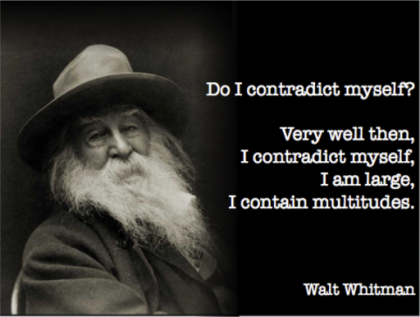Winter Cold Moon

In the Nix (see post below) the author Nathan Hill takes a side excursion into the difficult, thorny problem of the self. The idea he presents helped me, gave me a middle ground beyond the no-self notions of the Buddha and several contemporary psychologists and philosophers and the Western view of one true self.
The dialectic between no-self and one true self has always found me much closer to the one true self pole. It’s the one that I accept intuitively. In fact, it was the unquestioned truth until mid-college, so unquestioned that any other idea seemed literally absurd.
“Oh, that’s her true self.” We might say this when we see someone angry, apparently peeling back the onion, layers of false selves, to reveal the enduring self located, well, somewhere; or, when some other extreme behavior allows us, or so we think, to peer into the interior of another. This is the radical western reductionist view of the self, perhaps linked to the notion of soul, the essence of a person.
The Buddhist notion, which I don’t pretend to understand well, posits no I, no we, only a consciousness that responds to whatever shows up in the present moment, our self a narrative, a story we tell ourselves, but having no “real” existence.
In Hill’s notion there is a third, perhaps a middle way, between these two poles. A character says, oh, her true self has been hidden by false selves. No, Hill’s other character says, not by a false self but by another of her true selves. Ah. Not split personality or multiple personality, not that idea, rather the idea that we each have more than one “true” self.
This makes so much sense to me. The self that writes this blog is the writing me, the self that wants somehow to turn my inside out so others can see in. I have a husband self who acts in relation to Kate and to the history of relationships I’ve had. There is a grandparent self brought into existence by Ruth and Gabe. A Woolly self. A friend self, perhaps as many friend selves as I have friends. There is an art lover self, a physical self focused on the body, a reading self, too, who willingly opens all these selves to influence by another. Each of these true selves, and many others, have their own history, their own agenda. You might call these selves the specific wanderer on each of my several ancientrails.
Given the quote above from Whitman, I’ll call this the Whitman theory of self. It is, for now, the one to which I adhere.
